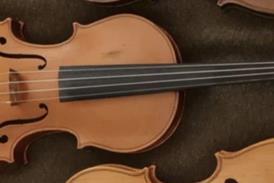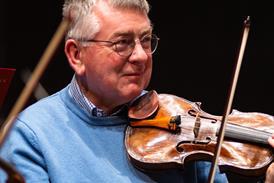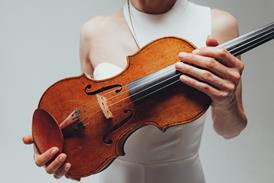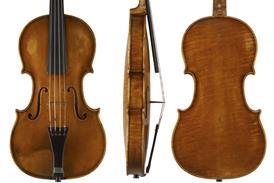Making a recording comes with its own special set of pressures, and moving from the stage to the studio isn’t the easiest transition for a musician to make. Here violinist Tamsin Waley-Cohen sets out her advice earned through experience

The recording studio, where we put down for eternity the art we usually create in a heartbeat, gone forever the next second. Here, the creation is captured and it must stand the test of time. Of course, preparation is everything. Yes, practise, practise, practise, but how? Here are a few things I have learned along the way, and I still find my learning curve about the music, myself, and my playing, is huge each time I make a recording.
1. Don’t just record for the sake of recording
If you are going in to a recording studio, you should have your ‘reason to record’, whether that is repertoire or interpretation led. With so many truly great recordings at our fingertips, there must be a true purpose behind adding to the vast catalogue already available.
2. Know the music and know your mind
My main advice is to be absolutely convinced by your interpretation. Even if you change your mind later, which you probably will, you want to be able to stand by what you did during those days, and know that it had honesty, integrity, and deep understanding. Know what you want from every single note, how it fits into the musical sentence, how that sentence connects to the next. Analyse your changes of colour and texture in great detail, every shift, the end of every phrase. The microphone picks huge detail – use this to your advantage.
3. You might change your mind one day, but that’s ok
A recording can only ever be a snapshot of a few days work, or even less; a snapshot of where you are as an artist and a player at that moment. It can feel like a huge amount of pressure to make a recording, so remembering that you can only do the best you can at that precise time is hugely helpful.
3. Play the repertoire live first
To create freedom, I would ensure a minimum of five performances of any work you are going to record, so that you have lived with it on stage, and have completely internalised its narrative. It can also help you to bring that vital performance energy and creativity in the studio. As always, freedom comes from solid foundations.
4. Record yourself before stepping into the studio
Structure is key. I would recommend recording yourself once or twice, perhaps during concerts, to ensure the overall shape of the works functions with your interpretation, to avoid any nasty surprises when you listen back in the studio. Of course details can be changed as you record and listen back, but if the overall shape isn’t working, that can be very problematic. However, I personally avoid over recording beforhand as it can be restrictive psychologically.
5. Free doesn’t mean inconsistent
Make sure you have a certain consistency of tempo, particularly in fast movements, as otherwise it will be very difficult or impossible for the producer to edit different takes together.
6. Healthy body, healthy mind
In days before, prepare yourself physically and mentally. Make sure you are in tip-top shape. Plan how to use your energy and what to record on which days. You will need to pace yourself as recording foten requires six to eight hours playing at full intensity.
7. Enjoy yourself
Most importantly: remember this is still a creative process, and try to enjoy playing the music you love so much!
Tamsin Waley-Cohen’s new album, Bohemia, is out today. It features works for violin and piano by Dvorák, Janácek and Suk recorded with pianist Huw Watkins.



































No comments yet